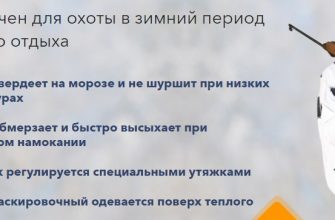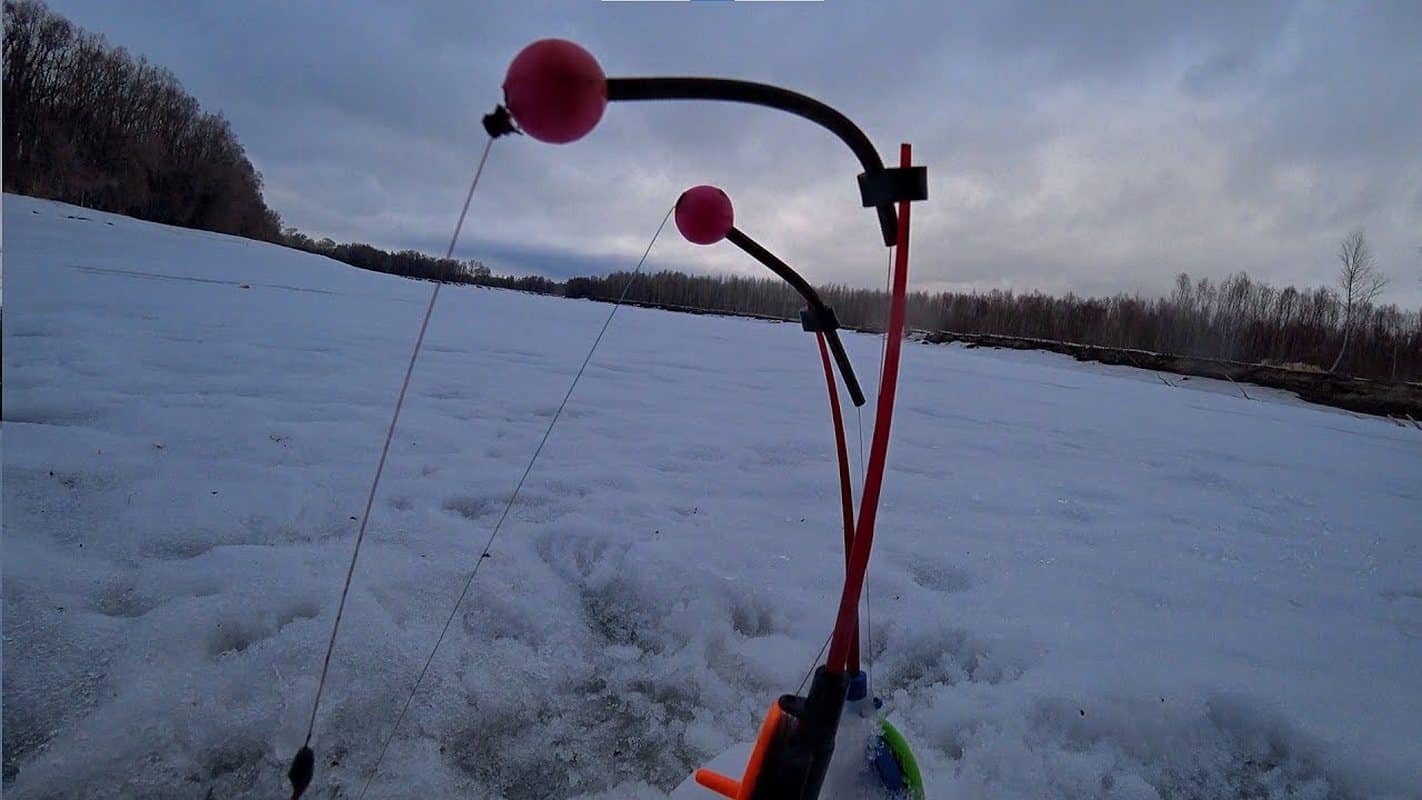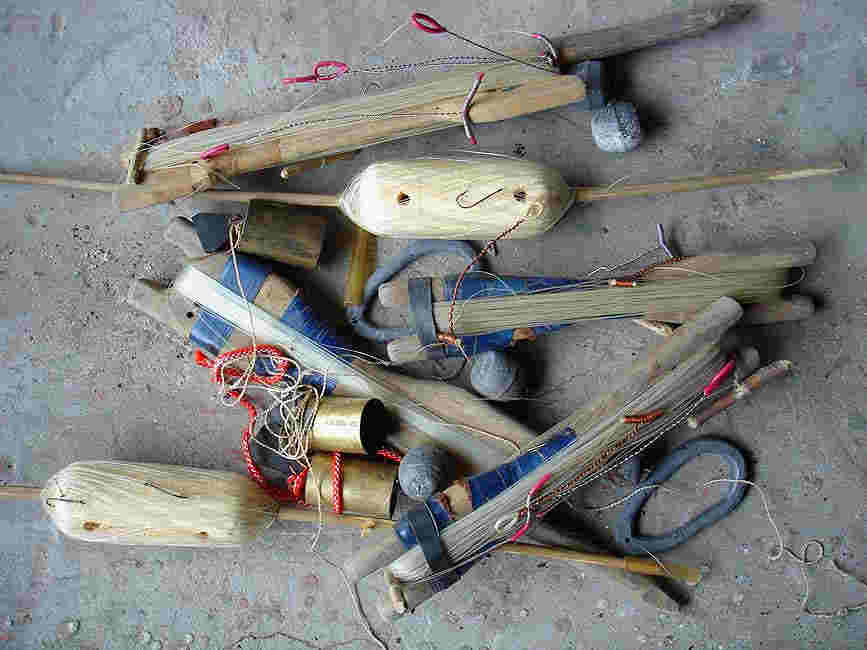Fishing for burbot from ice is a very effective method in winter. This fish is difficult to fool with artificial bait. At the same time, when using a girder, a live bait or an animal nozzle is used. Burbot will not be able to refuse such bait, which significantly increases the likelihood of a successful bite.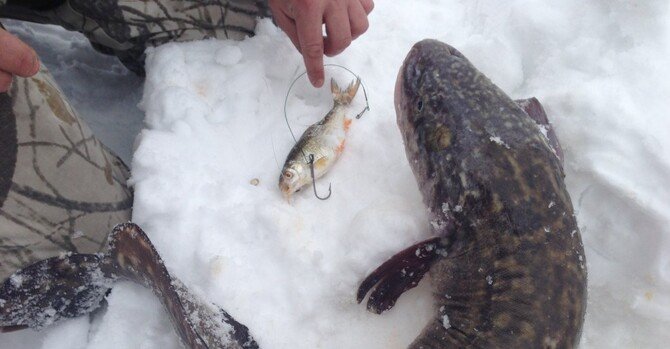
- Rigging for burbot gutters – standard supplies, pokes, flags
- Burbot habitat
- Secrets of catching burbot on the river with girders and supplies
- Fishing times and weather conditions
- Tips
- Features of hooking and playing
- How to position and drill holes
- Night VS day
- Strategy for moving through an unfamiliar body of water
- Favorite live bait
- Поделиться ссылкой:
Rigging for burbot gutters – standard supplies, pokes, flags
To catch burbot in winter, you can use different types of live bait tackle. They differ in the composition of the elements. However, the principle of operation of such devices is the same. Most often, fishermen use supplies, pokes, non-freezing girders. It is also permissible to use bets-flags and kolobashki.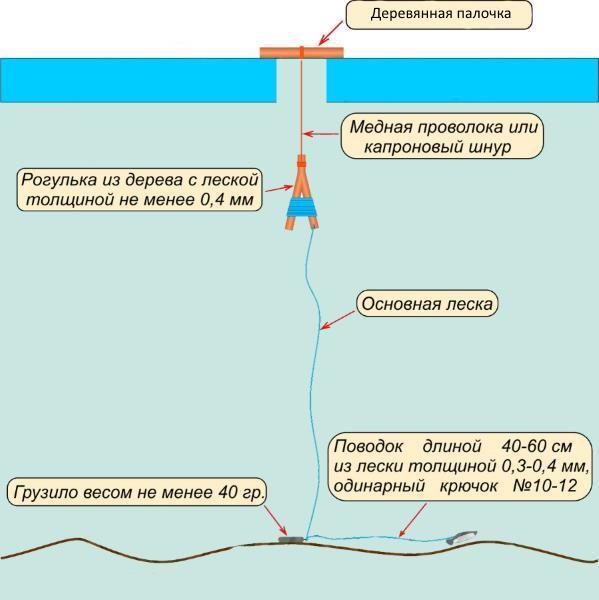


- line stock – 15-20 meters;
- line thickness – 0.4-1 mm;
- sinker weight – up to 100-150 grams;
- leash length – 0.5 meters.
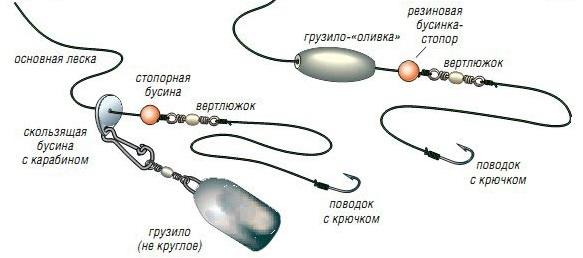
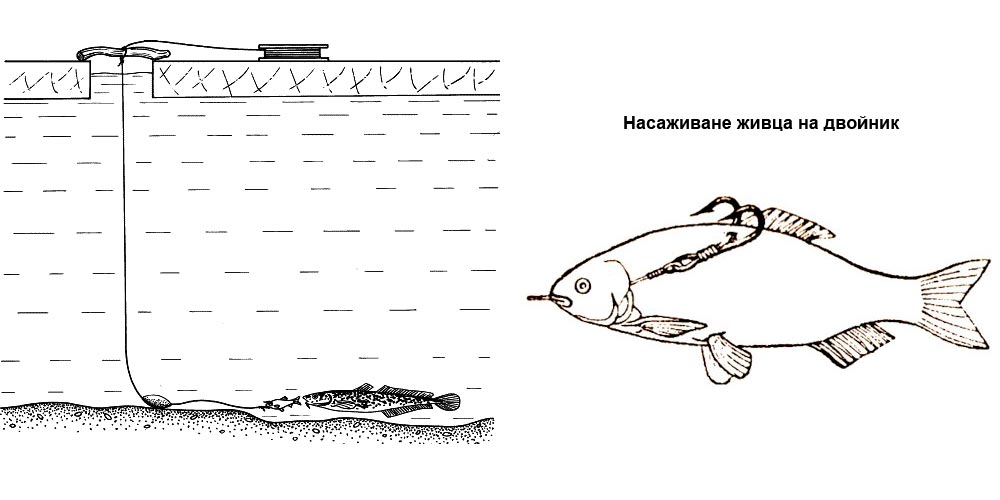
Burbot habitat
For the correct installation of the girders, you need to pay attention to the choice of a place for the upcoming fishing. The most difficult moment when preparing for winter fishing is determining the routes of the fish. She sticks to certain habits and does not change them. If the burbot has chosen a certain path, he almost never turns off it. Experienced fishermen start calculating routes in the summer. To independently determine the pattern of movement of this fish, it is worth studying information regarding underwater currents and features of the bottom topography. Burbot often chooses the inflow zones of small rivers or springs located underground. They are characterized by a hard bottom that does not have silt. At the same time, the transparency of the water is considered the key criterion that should be taken into account when determining the pattern of movement of this fish. It is not found in polluted water bodies.Also, burbots often live in the area of sharp cliffs, near capes or at the exits from bays.
Secrets of catching burbot on the river with girders and supplies
In winter, it is best to catch burbot with live bait, and therefore live fish should be used as bait – small gobies, ruffs, roach, smelt, minnows. The
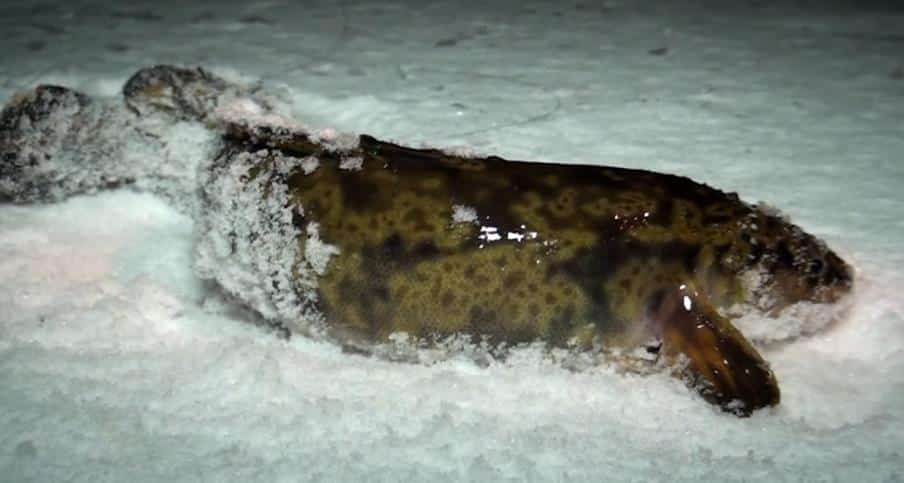
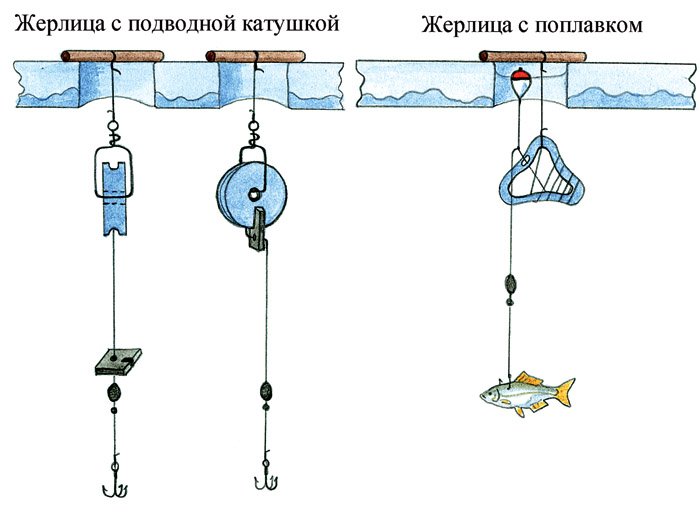
Fishing times and weather conditions
The behavior of the burbot is different from that of other fish. The worse the weather conditions, the better the bite. The lower the air temperature, the more snow or the stronger the wind, the more catch is possible. Of course, not every fisherman is ready to go to the reservoir in inclement weather. If he decides on this, an excellent catch is guaranteed. Burbot retains its activity throughout the winter, the most active catch on girders is in December and January. Bad biting is possible only during the spawning period, which is observed in February. This pause lasts about 2 weeks. During the spawning period, burbot does not eat, however, it can beat the fry that are nearby. If the fry turns out to be zerlichny live bait, the predatory fish will not fail to feast on it.
Catching burbot on girders at night in November-December is considered the best option, during this period of winter the predator bites best.
Tips
Features of hooking and playing
It is recommended to catch burbot in a passive way, since the fish is spotted by itself, deeply drawing in the bait. To do this, you need to arrange the tackle, after which from time to time go around them and pull out the fish. Often the girders are left overnight. They need to be checked in the morning. When using girders with flags, it should be borne in mind that the predator can peck very carefully, swallowing live bait while standing on one point. Therefore, signaling devices often do not work.
How to position and drill holes
To put the girders, you need to make a number of holes in the ice. They are placed in a straight line, in a zigzag pattern, in a checkerboard pattern, in an arc. The scheme should be chosen taking into account the fish sites. The bottom topography is of no small importance.
Night VS day
Burbot is characterized by a nocturnal lifestyle. During the daytime, he is mostly passive. Therefore, it is rarely possible to catch fish during the day. She bites at night or late at night. However, the specific dates directly depend on the weather. In some cases, the fish bite all day long. Better results can be achieved when using gutters. They are installed at night – at the moment the predator goes hunting.
Strategy for moving through an unfamiliar body of water
Fishermen, who first came to the reservoir, need to find the routes along which the burbot moves. To do this, it is necessary to make holes at different points and set the supply as wide as possible. After the first bites, you can concentrate the gear in a certain place. This strategy is considered to be quite dynamic. It involves constant movement on the ice. How to catch a burbot in the winter on a zerlitsa (how to catch, save and bait live bait on a pond, collecting and equipping supplies): https://youtu.be/XMgJVQ31qGs
Favorite live bait
For burbot fishing to be successful, it is recommended to pay attention to the choice of live bait. The most suitable options include:
- Loach is the favorite food of burbot. However, it can be quite difficult to get it, especially in winter. In winter, the loach is not caught with a bait. To catch fish, you can use lift traps. They are lowered to the bottom and air bubbles are supplied with a compressor, which attract the attention of the fish.
- Ruff – Desired prey for predatory fish and burbot in particular. At the same time, it is much easier to catch this fish in winter. Ruff is considered to be quite tenacious. Therefore, it retains its attractiveness for burbot for a long time.
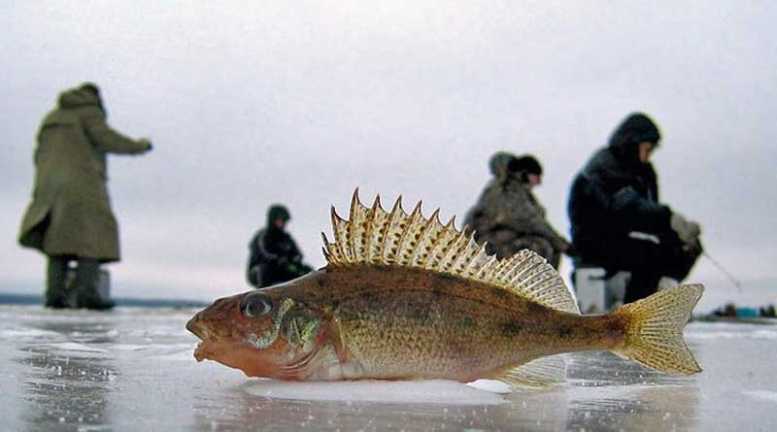
- Perches and gobies – these fish also attract burbot. They can be safely used as bait.
Fishing for burbot with girders in winter is a promising method of fishing, albeit a bit boring in comparison with fishing for pike and large perch.
